Electrochemical Cleaning
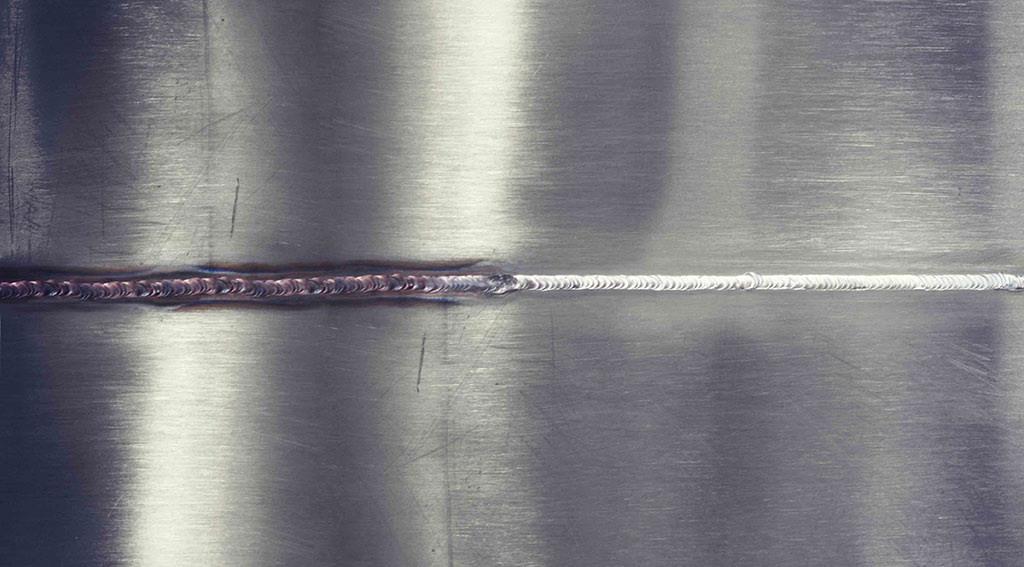
Electrochemical cleaning cleans metal after mechanical processing (including welding). The metal workpiece is immersed in an electrochemical bath typically filled with an acidic electrolytic solution. As an alternative to immersing the piece in a bath, electrochemical cleaning systems can swab specific areas with pads or carbon fiber brushes soaked in solution. When electric current flows through the bath or through the pad and brush, impurities on the metal’s surface oxidize and dissolve.
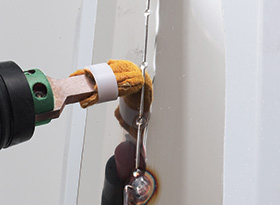
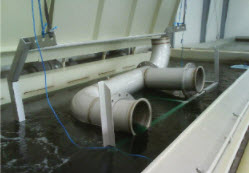
All Surfox systems can achieve electrochemical cleaning and pads or brushes have many advantages compared to the bath:
- The pad and brushes focuses only on specific areas (welds, corrosion points, localized impurities, etc.).
- Cleaning with the pad or the brush does not alter the whole surface of the piece, so it can be safely used when working with special surface finishes (brushed finishes, mirror finishes, designs, etc.).
- Using a pad or a brush electrochemical system eliminates construction costs required for bathing plants (equipment, electricity, electrical systems, security systems, etc.).
- Cleaning with the pad is simpler and less time consuming that cleaning baths. It eliminates many steps.
However, the cleaning bath has its advantages as well:
- It creates a regular, smooth surface on the entire piece.
- It cleans all parts of the piece including complex geometries not accessible with a pad or a brush.
Electrochemical cleaning is faster than chemical pickling and guarantees high-quality cleaning. The process makes stainless steel both aesthetically pleasing and resistant to corrosion. After welding, steel’s anticorrosive properties are depleted by chromium carbides that form on the surface and by contamination. In time, corrosion leads to dangerous failures.
Cleaning also removes any residue of iron powder deposits on the steel. Steel housed in the same environment where mechanical drilling, turning, and welding occur often accumulates iron powder. Generalized or localized corrosion frequently develops at the site of iron powder deposits.
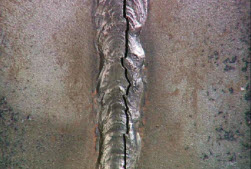
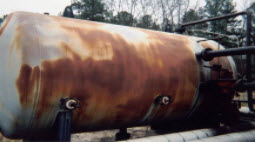
The electrochemical process is widely popular because:
- It does not leave halos and stains like chemical cleaning does.
- It does not use nitric or hydrochloric acid-based chemical solutions, which are extremely aggressive.
- Unlike mechanical cleaning, it does not leave abrasive particles on the steel’s surface and does leave abrasion marks.
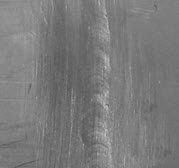
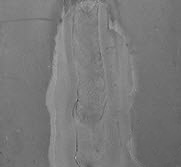
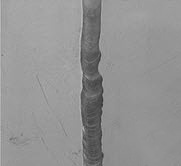
The electrical component of the process controls the speed of the process. As the current flows, the workpiece can act as either a cathode or an anode. With cathodic polarization, the acidic solution generates hydrogen ions, leading to an accumulation of molecular hydrogen on the surface of the piece.
Cathodic polarization produces a “mechanical effect.” The presence of gas (hydrogen) causes residual welds to detach and rupture. It acts as an inhibitor against metal solubilization. This method is called cathodic protection.
If the piece undergoes anodic polarization, the following reactions take place:
- Metal dissolution. The metal turns into ions that flow into the chemical solution.
- Oxygen production. When working with metals that resist oxidization, such as gold or slightly soluble metals like lead in sulfuric acid, oxygen production is faster.
The surfaces of metal composed of carbon steel or iron become very reactive during anodic polarization and tend to oxidize again when exposed to air. This polarization greatly accelerates cleaning. Unless cleaning is stopped when the residual has been removed, additional metallic material may be lost. Our Surfox machines use anodic polarization to obtain a shiny, clean weld or electropolished metal pieces by immersion.
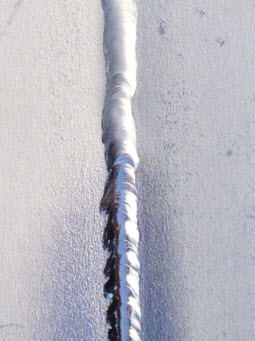
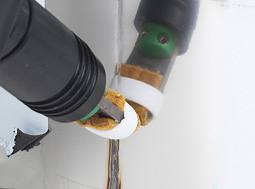
The most widespread current mode, also used in SURFOX machines, is an alternating polarization of the part. In this case, the piece is polarized cathode and anode alternately, combining the effects of the two processes and obtaining:
- Development of gaseous hydrogen (cathode)
- Solubilization of the weld (anode).
These two processes work together to detach residues and protect the metal underneath. This makes alternating polarization faster.These two processes work together to detach residues and protect the metal underneath. This makes alternating polarization faster.
The current transmission technology used is very important. The difference is made by the use of either a transformer or an inverter.
- During the cleaning process, the SURFOX machine constantly corrects the current (Power Factor Correction). Controlling the current avoids sparks and short circuits that may damage the surface of the steel and create microscopic pits.
- The power supply cost is lower, as efficiency is doubled.
The electrolytic cleaning process ends with neutralization. After cleaning, a layer of acid temporarily covers the surface. The acid must be neutralized before it compromises the entire cleaning process and causes irreparable damage.
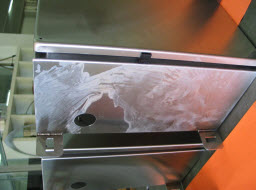
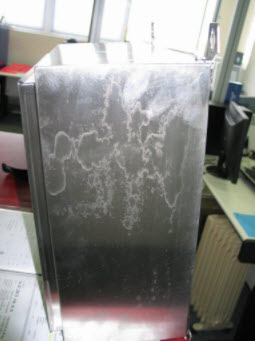
Neutralizing the surface involves treating it with a base solution to restore normal pH values. The neutralizing solution reacts with the acid solution, raising pH values to 6-7.



